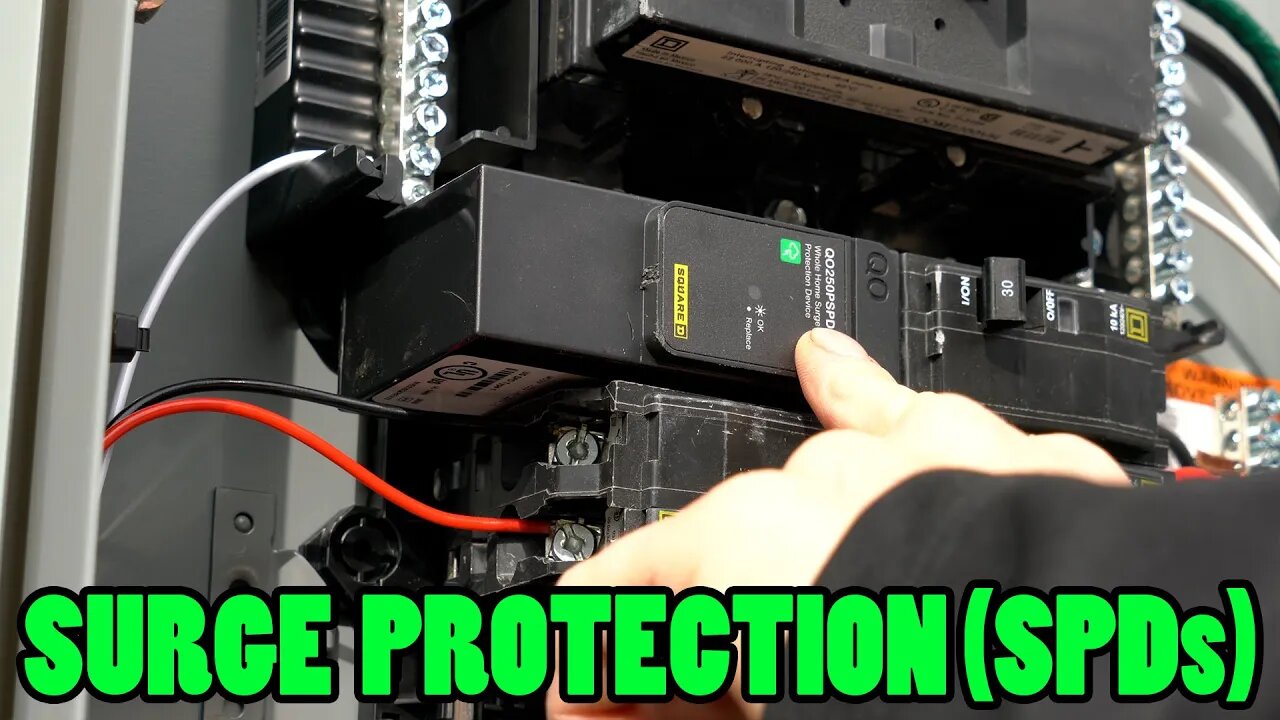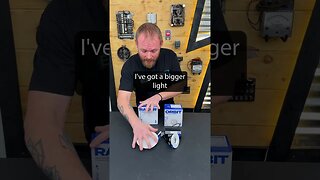Premium Only Content

SURGE PROTECTORS (SPDs) - What They Are, How They Work, What You Need To Know
In today's video we dive deep into transient over-voltages (surges), Surge Protection Devices, and the new NEC codes that bring major changes to our residential field.
SPONSOR: Schneider Electric
https://homedepot.sjv.io/c/1240960/963729/8154
👾🤖PRACTICE EXAMS🤖👾
https://www.electricianu.com/practice-exams
😎👕MERCH👕😎
https://www.electricianu.com/merchandise
📲👥SOCIALS👥📲
Instagram - https://www.instagram.com/electrician_u
Discord - https://discord.gg/7ykYfbh
Facebook Page - https://www.facebook.com/theelectricianu
Facebook Group - https://bit.ly/2tz7eQh
TikTok - https://www.tiktok.com/@electricianu
Reddit- https://www.reddit.com/r/ElectricianU/
Surge Protection. Why, where, and wut?
NEC 2020 code requirement changes
The National Electric Code (NEC) sets the standard for electricians and electrical work across the US, with the arrival of it’s 2020 edition adding some substantial changes to the codes on surge protection. The most notable of these changes can be found in “Services” article 230.67, which states that any new or replaced service supplying a dwelling unit must be provided with a Type 1 or Type 2 Surge Protection Device. Residential Services will no longer pass inspection in most jurisdictions without a surge protection device either inside the service panel or immediately adjacent to... Which is kind of a big deal. In addition, NEC has moved the entire article of Surge Protection Devices from 285 in the 2017 edition over to 242, renaming the article Overvoltage Protection in order to incorporate surge arrestors over 1000 volts. Lastly adding a helpful table (Table 242.3) listing other sections of the NEC that mention surge protections for specific uses, such as fire pumps and data centers.
What is a surge?
A power surge or “transient over-voltage" is a spike in voltage to an electrical system that can reach thousands of volts so instantaneously that it has to be measured in fractions of a second. There are multiple types of surges, the most common is caused by large loads with-in the electrical system (e.g., Air Conditioning units, elevators and motors). These surges created by appliances and motor loads are typically oscillatory, or one event that remains just long enough to cause a “rippling effect” in the system and will shorten the life of sensitive electronics. The larger less frequent surges are caused by changes to the grid by the power company and lightning strikes to the grid itself. These surges are typically much larger impulse transients, meaning one spike that dissipates immediately, and can be detrimental to a building's electrical system...
For the full article, visit
http://electricianu.com/video/surge-protectors-spds-what-they-are-how-they-work-what-you-need-to-know/
#electrician #surgeprotector #NEC
--
Subscribe - https://www.youtube.com/c/electricianu?sub_confirmation=1
IF YOU ENJOY THESE VIDEOS PLEASE SUBSCRIBE AND "LIKE" THEM ABOVE. ALSO CHECK OUT THE ELECTRICIAN U PODCAST ON ITUNES AND SPOTIFY!! best surge protector
-
 0:50
0:50
Electrician U
1 year agoWhat Are Lumens?
12.7K4 -
 8:27:46
8:27:46
Sm0k3m
10 hours agoPlaying games on Rumble
30.6K2 -
 10:37
10:37
Russell Brand
2 days agoHow is this even allowed?
178K843 -
 1:37:26
1:37:26
Real Coffee With Scott Adams
7 hours agoEpisode 2701 CWSA 12/26/24
96.7K87 -
 2:58:58
2:58:58
Wendy Bell Radio
11 hours ago9 Steps Ahead
124K140 -
 2:03:46
2:03:46
LFA TV
20 hours agoTIME FOR A NEW SPEAKER! | LIVE FROM AMERICA 12.26.24 11am EST
73.2K46 -
 1:40:22
1:40:22
Game On!
17 hours ago $5.49 earnedNFL Thursday Night Football Seahawks at Bears EXPERT Picks!
53.7K9 -
 1:50:54
1:50:54
xBuRnTx
7 hours agoWho's Ready for New Years!
39.8K1 -
 12:09
12:09
Tactical Advisor
19 hours agoSmith & Wesson Shield Plus Carry Comp
32.6K2 -
 4:35:25
4:35:25
Father Russell
12 hours agoDelta Force | Not A Woman? | Mad Martigan Time
71.7K5